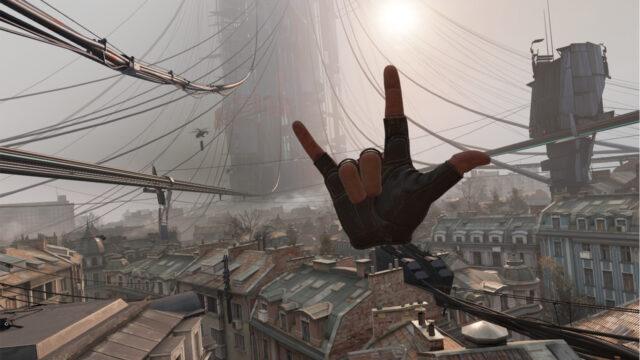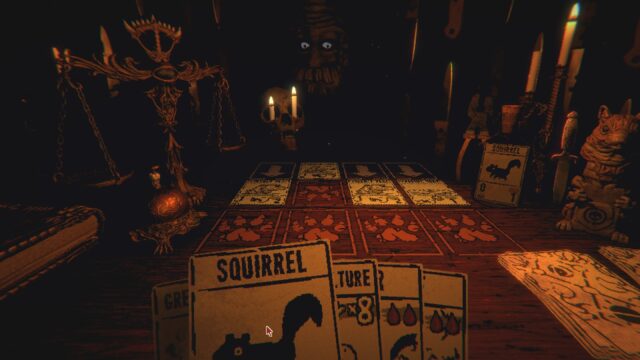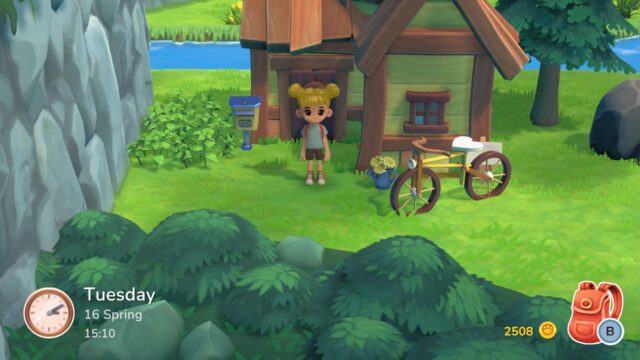Assassin's Creed III Review
They say that size doesn’t matter, but it’s hard to overlook the size when playing a game like Assassin’s Creed 3 – where you can easily spend 8 hours just on the introductory part.

The game begins with a short video summarizing the intricate plot of the previous games, consisting of four different parts, before the start of the “third” adventure. After that, there is a semi-playable introductory episode, reintroducing us to the genetic memory explorer Desmond and his comrades. Then there is a long gameplay prologue in Boston and the Frontier, during the early stages of the American Revolution. Next, we are introduced to the childhood of the main protagonist, Connor, a mixed-blood Native American, followed by his inevitable initiation into the Assassin Order, and only after that – the actual beginning of the game. In the final chapters of the previous installments, there was no visible end, and in Assassin’s Creed 3, there is no visible beginning.
Even after the game starts, the designers continue to teach you various systems and mini-games in the settings of the 18th-century Eastern Seaboard of America. You can capture Templar forts, hunt wildlife in the forests and hills, liberate city districts, attack enemy convoys, establish your own Assassin Guild, build your Homestead in the Frontier, craft and trade, battle the British fleet on your ship “The Aquila,” collect Almanac pages from rooftops, feathers from treetops, pirate trinkets from cliffs, search for treasures along the coast, play various board games in taverns, rescue citizens from bombardment and blockade, eliminate Templars, and – to put it mildly – much, much more. If you appreciate scope and longevity, there are few games that offer more diverse activities for the same price. There is even multiplayer.
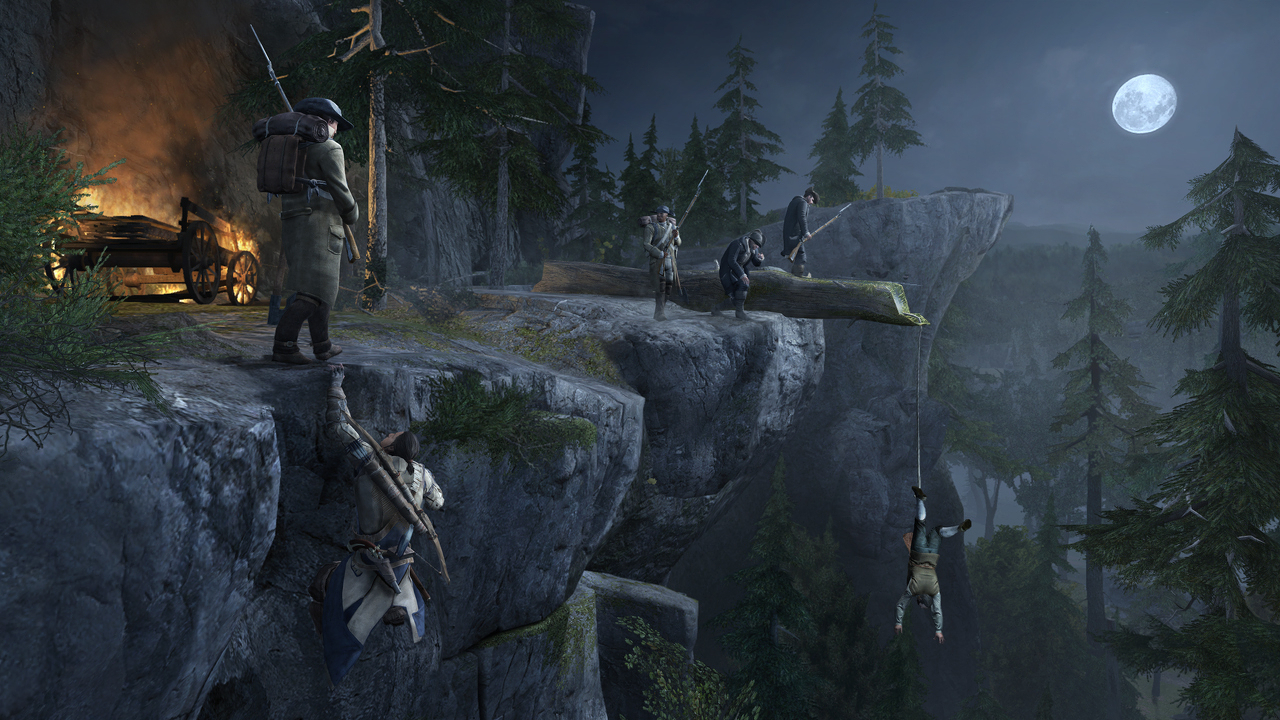
Walks in the Frontier force more interaction with the environment than, perhaps, in any location from previous series.
A huge amount of side activities and a long introduction here are not at all meant to compensate for the lack of the main plot. Connor’s story is long and convoluted – a traditional series of targeted assassinations of well-known Templars who stuck their noses where they shouldn’t have during the birth of the United States in the second half of the 18th century. He will take part in the Boston Tea Party, the Battle of Bunker Hill, and other significant events, shoulder to shoulder with personalities such as Paul Revere and William Molineux, Charles Lee and George Washington. As usual, each “episode” consists of several preparatory missions – tracking a courier, chasing people across rooftops, cannon bombardment, and so on – followed by a discreet assassination in a crowded place, like eliminating a British commander in the midst of a large-scale battle.
Our proud “Eagle” does not surrender to the enemy
It wasn’t always like this before, but in Assassin’s Creed 3, side missions have truly become an important part of the game. And a separate point here is the naval battles – maneuvering around the unwieldy Man o’ War or shooting grapeshots at the masts of British vessels is pleasantly exciting, and the camera following Connor, struggling with the helm, makes you feel like a part of what’s happening.
Judging by its individual components, Assassin’s Creed 3 is quite a non-linear game. Maybe it was inevitable, but Connor doesn’t have the charisma of his predecessor, Ezio Auditore, and most of the personalities involved in the Revolution also seem dull, except for a few interesting characters like Leonardo da Vinci or Niccolò Machiavelli. There are some fun battles in a few episodes when Connor teams up with a mysterious opponent, but everything else seems somewhat dull compared to those scenes.
Some mini-games and auxiliary systems also seem unnecessary, and there are also some minor bugs. What remains unchanged is the feeling that this is no longer a simulator of a stealthy hunter of men. Assassin’s Creed 3 (GTA) is a solid versatile action, it just so happened that the main role here is an assassin.
However, the game still captivates, largely due to the combination of key features: wooden houses, fences, and straw-lined streets of Boston and New York next to the vast Frontier – vibrant vegetation, tall trees, dense thickets, deep rivers, and mountainous elevations – all of this with a multitude of details that attract attention and distract from the road even during the shortest journey.

As a rule, when you enter Assassin’s Creed 3 again, you check the global map to choose a mission. Let’s say it’s an icon of a Frontier resident, where you will hear a scary story that will lead you to the trail of legends about the Yeti or mythical sea monster. But on the way there, you notice an icon of a feather on the mini-map above you, you get off the horse and climb up. Then you dive into the nearest bushes – there you are lured by the binoculars icon, which means there is a wild animal nearby. Somewhere nearby is a cougar, and you set traps and hide in the forest to be ready to attack it with a bow or a hidden blade. But in the forest, a bear attacks you! You deal with it by timely pressing buttons, skin it, and continue the hunt. Then you return to the Homestead, where you process the harvested resources to make new items that can be sold on trade routes. After dealing with the cougar, you try to remember where you wanted to go first. And you return to the global map, which means more adventures await you.
Multiplayer
In many multiplayer games, it is added only so that they are not replaced by something else, without thinking about the fact that such a mode will not fit into the original concept and spoil the overall design. But the Assassin’s Creed series has always been an exception. All the games are deep enough on their own, so they justify their price with the single-player mode, but multiplayer is still present, and that’s already good. In such a big game like Assassin’s Creed 3, a separate disc is allocated for this mode (at least on Xbox 360), and judging by the amount of content, the extra space is not wasted.
In addition to the standard mode, where you have to identify enemies among the crowd of NPCs while remaining unnoticed, Domination (territory control) and Wolf-Pack modes have been added, where players need to team up to eliminate targets together within a time limit, throughout many missions. The multiplayer is still relatively simple, but thanks to a wide selection of modes, maps, achievements, and great variability, it has the potential to engage players more than before – as if the game itself can’t handle it.
***
The age of the game mechanics and engine constantly makes itself known. Riding a horse in the Frontier, you constantly bump into almost every stone, bush, or branch. Moving on foot in the city can also be fraught with difficulties because many different contextual actions are performed through economical controls – grab here, climb there, bypass here, hide there – it is not always possible to choose the right action at the right moment. On the other hand, combat is too simplified – block and attack, block and attack, block and attack. There will often be days when you start the game and nothing goes as planned. Connor will stumble over every stone, every stealth mission will turn into a bloody mess, and every visit to the rooftop will result in a fall.
But as soon as you show patience and rush less, dealing with these limitations becomes easier – just like before. Moving through the trees is perhaps the most exciting thing after running on rooftops in the original. When I finished the game, I spent even more time silently jumping from branch to branch in the Frontier, hunting and collecting various things. I only regret that the main story doesn’t really touch on the Frontier, which may be the best “city” in the series after Venice. When you catch your prey, whether it’s a poacher caught with a new and excellent rope dart or a deer that you jumped on from the branches – in those moments, Assassin’s Creed 3 shines in all its glory.
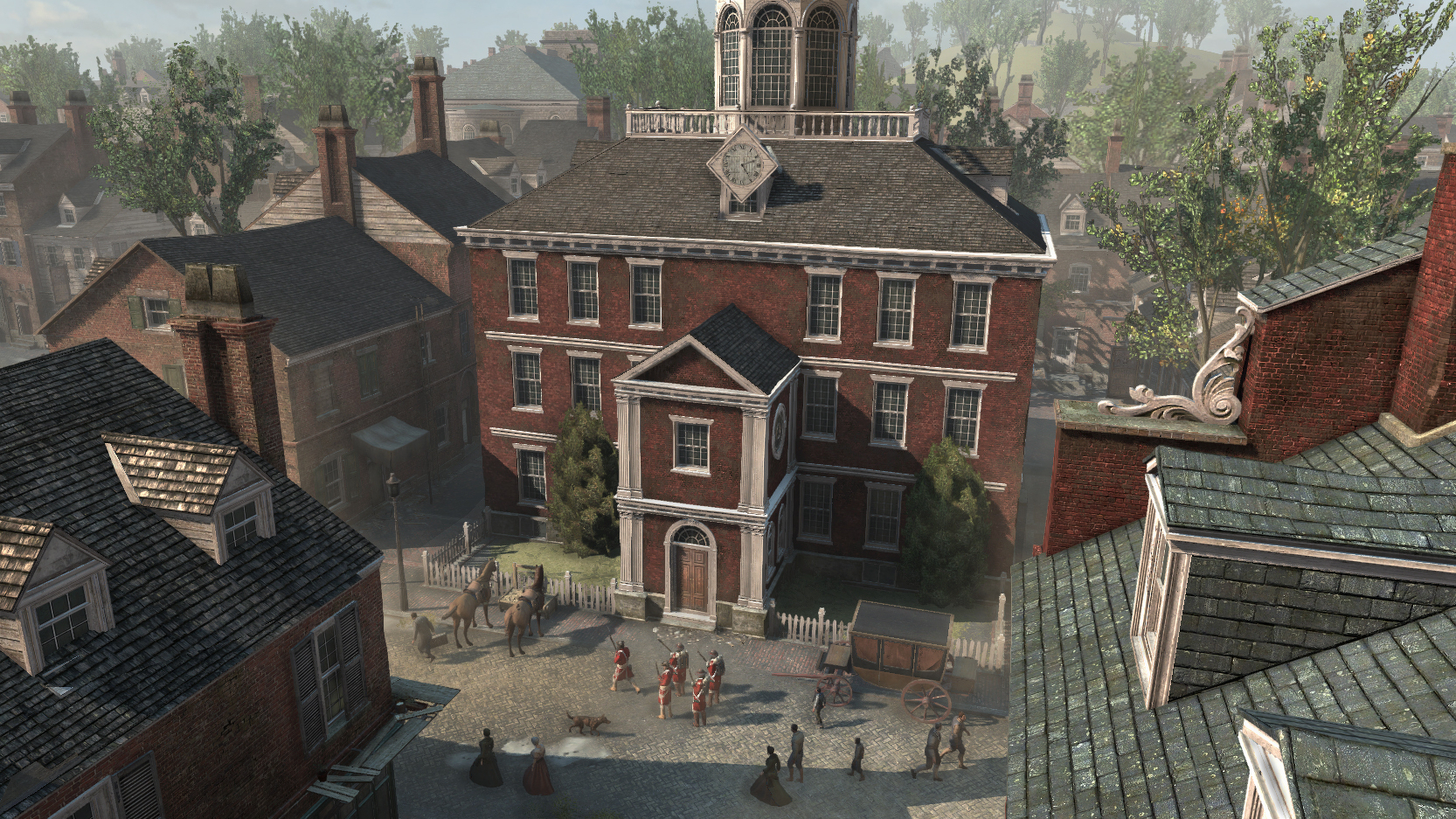
Both New York and Boston turned out to be large and diverse, and developers made the most of the landmarks of that time.
Of course, Connor is not present in the modern part of the game, and when we return to Desmond and various fantastical things after his adventures, everything starts to go downhill in Assassin’s Creed 3. The journey to New York to retrieve the First Civilization artifact is, in principle, not bad – a simple but interesting climb up a skyscraper – but after that, the missions seem as if they were made by a completely different team (and it’s quite possible that they were) and almost shed no light on the reason for Desmond’s strange behavior. Nor his relationship with his deranged father. And the ending of the game, considering five years of agonizing anticipation, turned out to be frankly weak.
For many long-running series, this would be a disgrace. But in this case, it is a peculiar manifestation of the transformation of Assassin’s Creed – the dull resolution is quickly forgotten when the game is launched again, and Connor steps out of the Homestead, heading to the Frontier. However, we still enjoy interacting with historical figures and searching for artifacts to save the world in December 2012 – and there’s no escaping from that, these moments still embody the entire series.
Once upon a time, Assassin’s Creed represented an atmosphere of mystery enveloping an interesting action game – remember when you first launched the first part, and it all started in the Abstergo office, and you didn’t understand what was happening? – but the action has long overshadowed all the mystery. Especially in Assassin’s Creed 3, where you can be a hunter, a ship captain, a silent assassin, an entrepreneur, a brave soldier, and anything else. All of this makes the third part the biggest and most immersive game in the series – maybe not the best, but one in which anything is possible.
Share
Discuss
More Reviews
